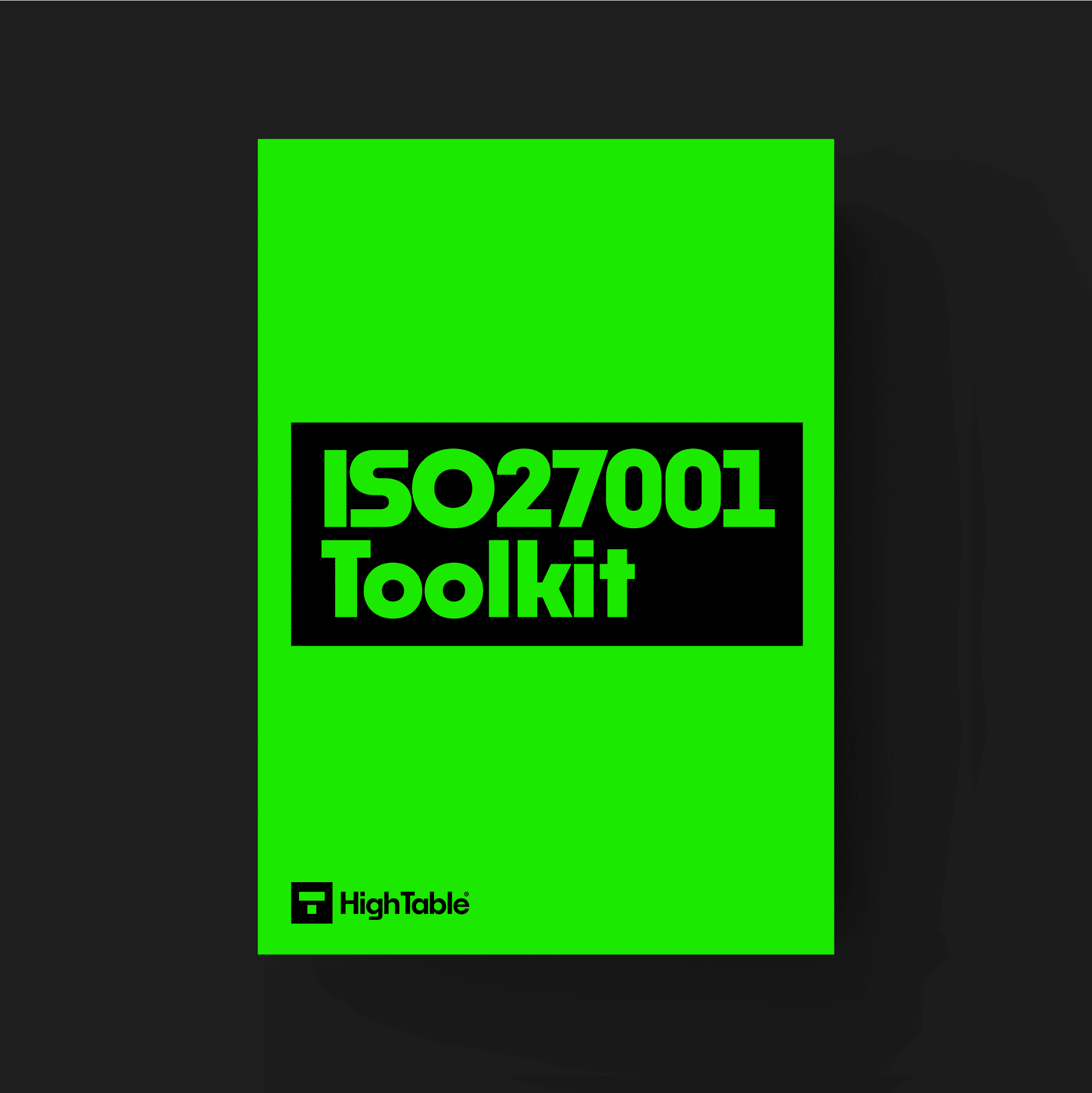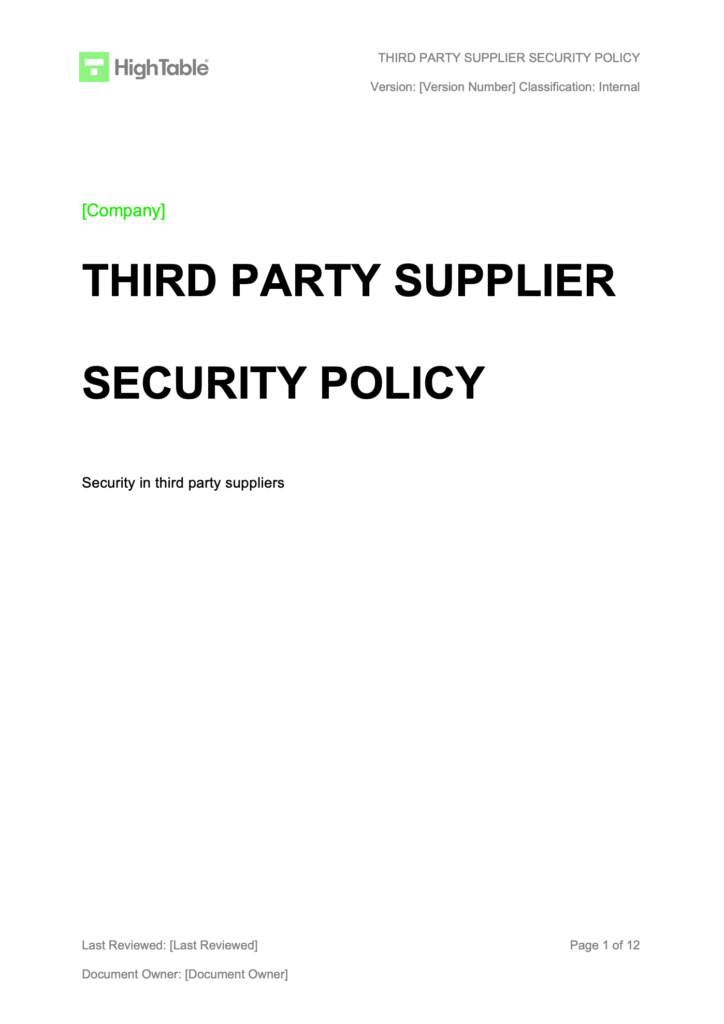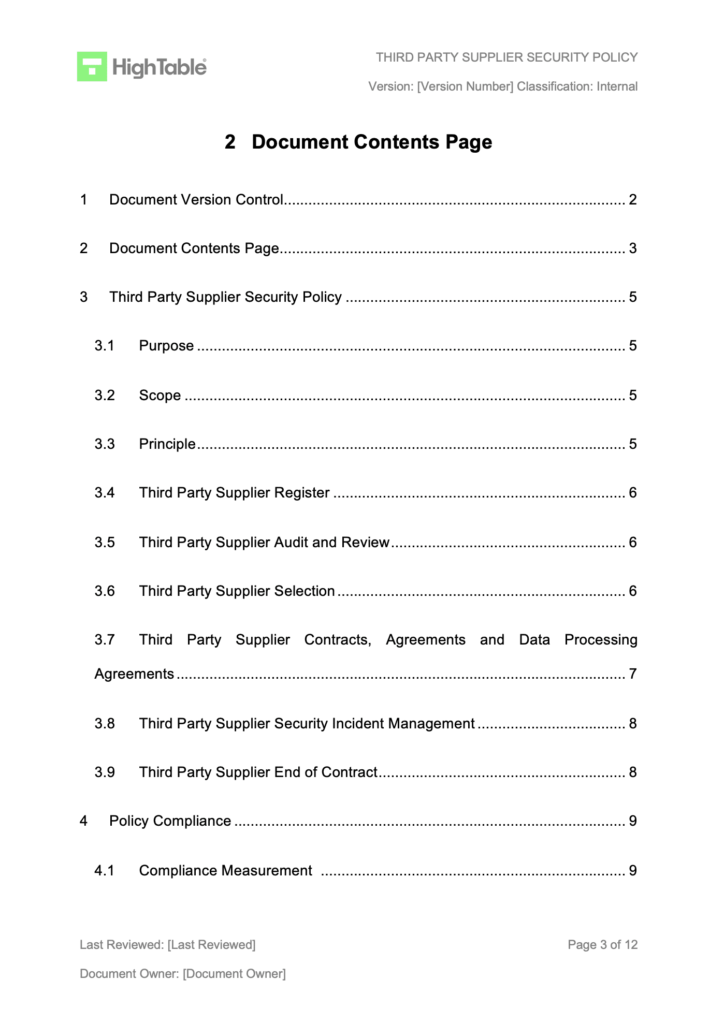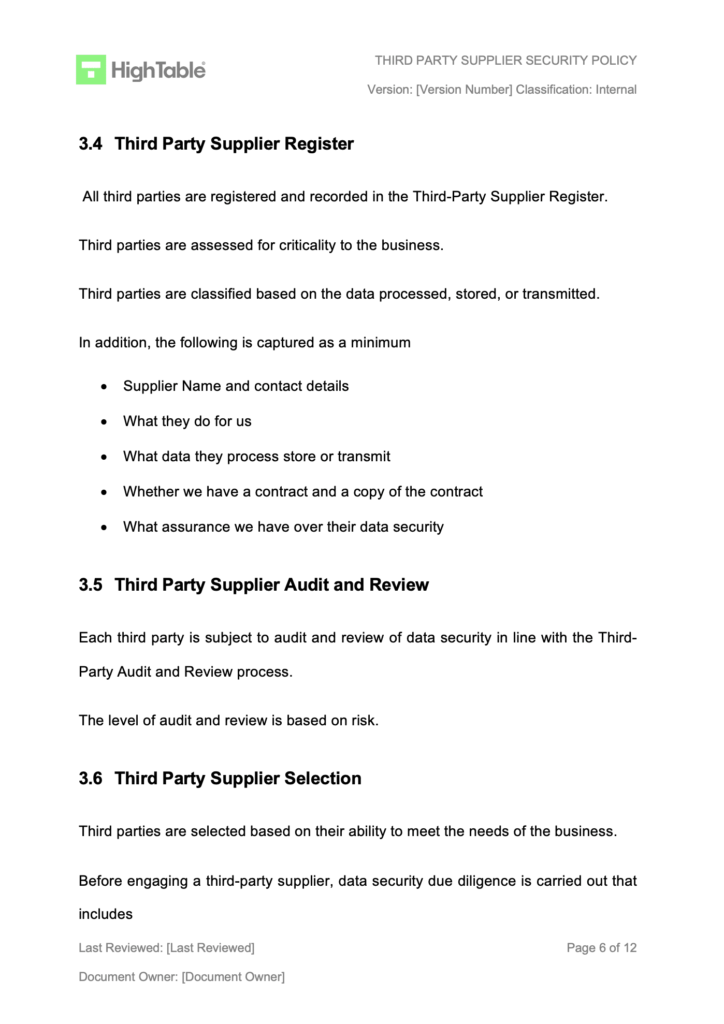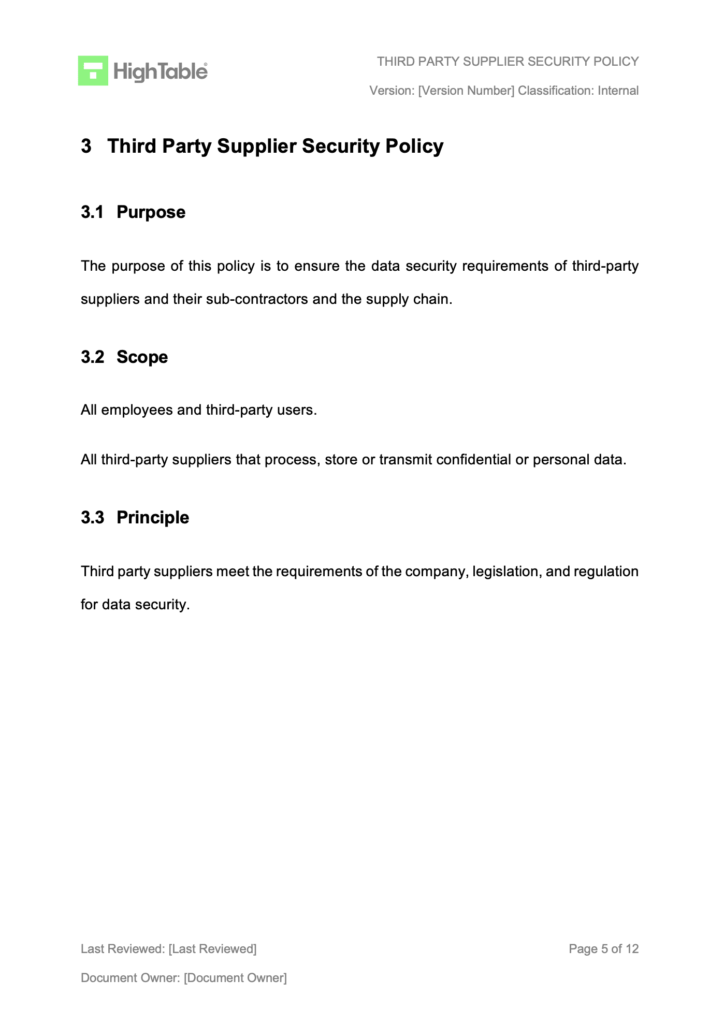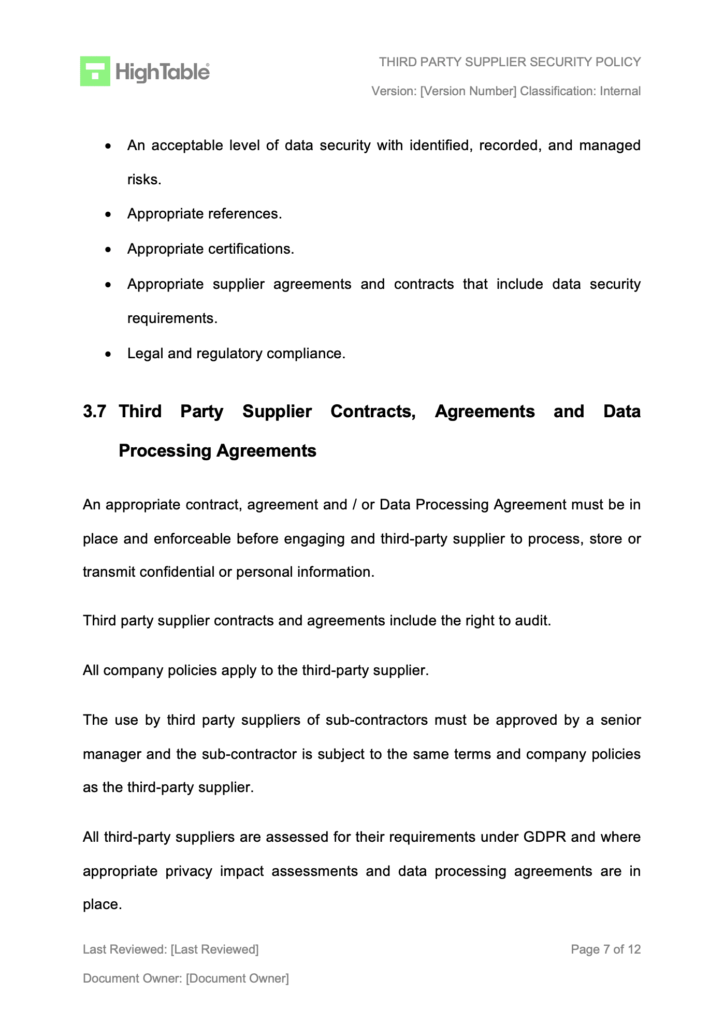An ISO 27001 supplier security policy is a playbook that keeps your company and your partners safe from cyber threats. It’s not as scary as it sounds, it’s all about making sure everyone you work with follows the same rules to protect important information.
What is it
An ISO 27001 supplier security policy is a set of rules and guidelines that you give to your suppliers and partners. It tells them exactly what they need to do to keep your data safe. It’s a key part of the ISO 27001 standard, which is all about managing information security. This policy helps you make sure that even when you’re working with another company, your sensitive information stays protected.
Applicability to Small Businesses, Tech Startups, and AI Companies
This policy is useful for businesses of all sizes, including small businesses, tech startups, and AI companies.
- For small businesses: This policy is super helpful because it gives you a clear checklist for your suppliers, so you don’t have to guess what’s secure.
- For tech startups: You often work with lots of different tools and services. This policy makes sure those third-party services are just as secure as your own.
- For AI companies: You’re dealing with huge amounts of data, which can be very sensitive. This policy is essential for protecting the data you use to train your AI models and the data you get from your customers.
ISO 27001 Supplier Security Policy Template
The ISO 27001:2022 Supplier Security Policy Template is designed to fast track your implementation and give you an exclusive, industry best practice policy template that is pre written and ready to go. It is included in the ISO 27001 toolkit.
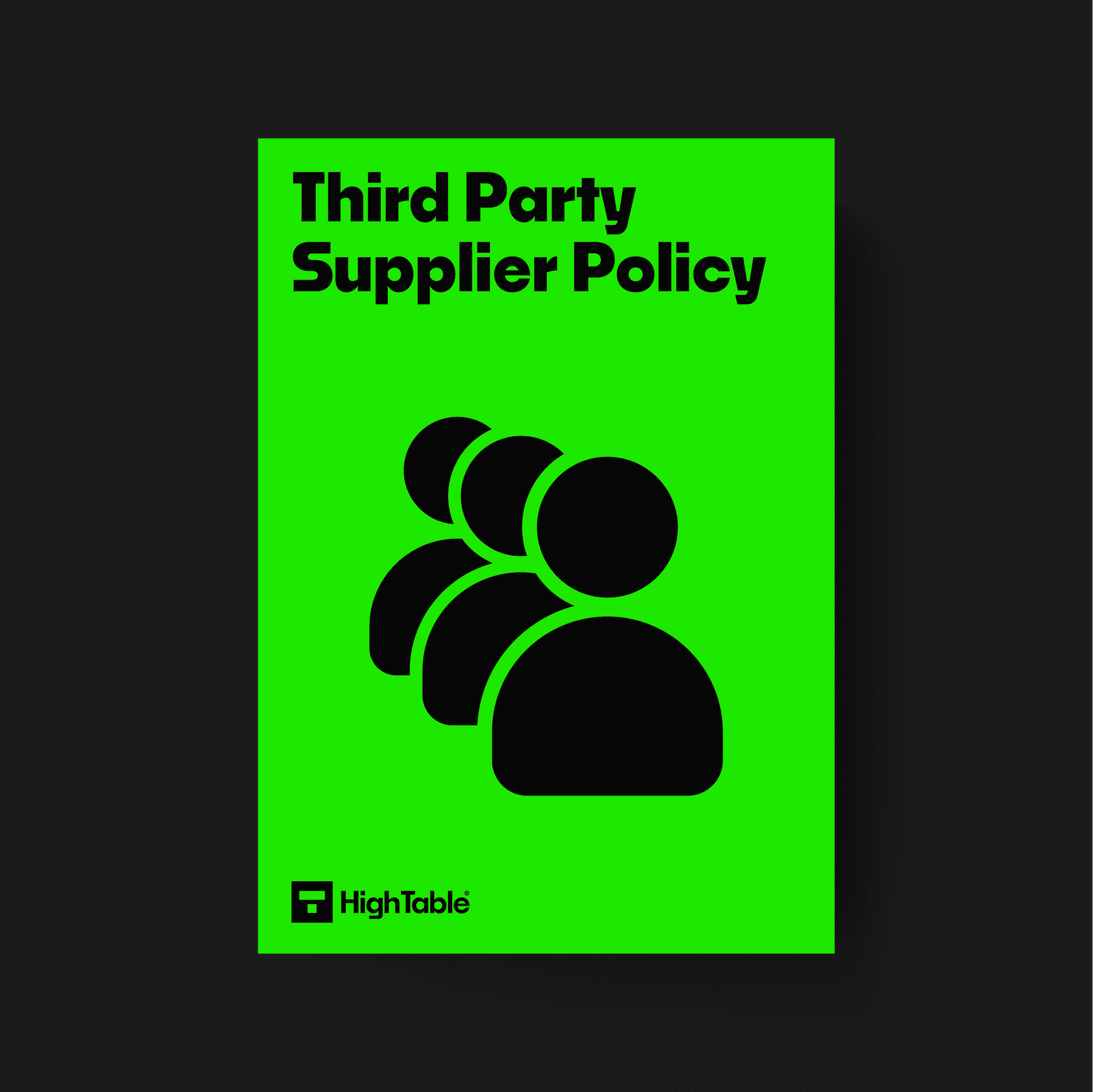
Why you need it
You need this policy because you can’t control what your suppliers do with your data. Without this policy, you’re just hoping they’re being careful. This document makes it a requirement. It helps you:
- Lower your risk: By making sure your partners are secure, you reduce the chances of a data breach.
- Build trust: It shows your customers and partners that you take security seriously.
- Meet compliance rules: Many industries have rules about how you must protect data. This policy helps you follow those rules.
When you need it
You need this policy whenever you:
- Start working with a new supplier who will handle your data.
- Share sensitive information with an outside company.
- Renew a contract with an existing supplier.
- Prepare for an ISO 27001 audit.
Who needs it?
You need this policy if your business works with any outside partners, like:
- Cloud service providers (e.g., Google Cloud, AWS).
- Marketing agencies that handle customer data.
- Software developers who work on your product.
- Payment processors who handle credit card information.
Where you need it
You should include this policy as part of your legal contracts with suppliers. It should be a formal part of your agreement, so both sides know what’s expected.
How to write it
- Start with a template: This is the easiest way to get going.
- Customise it: Change the template to fit your specific needs. Do you deal with very private medical data? Make sure your policy addresses that.
- Be clear and simple: Use easy-to-understand language. Avoid jargon. You want your suppliers to actually read and understand it.
- Get legal help: It’s a good idea to have a lawyer look it over to make sure it holds up in a contract.
Time needed: 1 hour and 30 minutes
How to write an ISO 27001 Supplier Security Policy
- Write the ISO 27001 Supplier Security Policy Contents Page
1 Document Version Control
2 Document Contents Page
3 Third Party Supplier Security Policy
3.1 Purpose
3.2 Scope
3.3 Principle
3.4 Third Party Supplier Register
3.5 Third Party Supplier Audit and Review
3.6 Third Party Supplier Selection
3.7 Third Party Supplier Contracts, Agreements and Data Processing Agreements
3.8 Third Party Supplier Security Incident Management
3.9 Third Party Supplier End of Contract
4 Policy Compliance
4.1 Compliance Measurement
4.2 Exceptions
4.3 Non-Compliance
4.4 Continual Improvement
5 Areas of the ISO27001 Standard Addressed - Write the ISO 27001 Supplier Security Policy Purpose
The purpose of this policy is to ensure the data security requirements of third-party suppliers and their sub-contractors and the supply chain.
- Write the ISO 27001 Supplier Security Policy Principle
Third party suppliers meet the requirements of the company, legislation, and regulation for data security.
- Write the ISO 27001 Supplier Security Policy Scope
All employees and third-party users.
All third-party suppliers that process, store or transmit confidential or personal data. - Explain the third party supplier register
All third parties are registered and recorded in the Third-Party Supplier Register.
Third parties are assessed for criticality to the business.
Third parties are classified based on the data processed, stored, or transmitted.
In addition, the following is captured as a minimum:
– Supplier Name and contact details
– What they do for us
– What data they process store or transmit
– Whether we have a contract and a copy of the contract
– What assurance we have over their data security - Describe the supplier audit and review approach
Each third party is subject to audit and review of data security in line with the Third-Party Audit and Review process.
The level of audit and review is based on risk. - Lay out the supplier selection criteria
Third parties are selected based on their ability to meet the needs of the business.
Before engaging a third-party supplier, data security due diligence is carried out that includes
– An acceptable level of data security with identified, recorded, and managed risks.
– Appropriate references.
– Appropriate certifications.
– Appropriate supplier agreements and contracts that include data security requirements.
– Legal and regulatory compliance. - Record the requirements for supplier contacts and agreements
An appropriate contract, agreement and / or Data Processing Agreement must be in place and enforceable before engaging and third-party supplier to process, store or transmit confidential or personal information.
Third party supplier contracts and agreements include the right to audit.
All company policies apply to the third-party supplier.
The use by third party suppliers of sub-contractors must be approved by a senior manager and the sub-contractor is subject to the same terms and company policies as the third-party supplier.
All third-party suppliers are assessed for their requirements under GDPR and where appropriate privacy impact assessments and data processing agreements are in place. - Explain the roles of supplier incident management
Third party suppliers must have a Security Incident Management process in place.
Third party supplier security incidents that impact confidential or personal information must be reported within 12 hours elapsed of becoming aware of the incident.
Third party supplier security incidents are managed as part of the incident management process. - Describe what happens at the end of supplier contracts
At the end of the contract the third party will confirm in writing that it has met it contractual and legal obligations for the destruction of company confidential and personal information.
All access to systems and information is revoked.
All assets are returned to the company. - Describe the process for policy compliance
Set how compliance with the policy will be measured and enforced.
How to implement it
- Give it to your suppliers: Make sure every new supplier gets a copy of the policy and agrees to follow it.
- Train your team: Your own employees need to understand the policy, so they know what to look for when vetting a supplier.
- Check on your suppliers: Every now and then, you should check in with your suppliers to make sure they’re still following the rules. This could be a quick security review or an audit.
Examples of using it for small businesses
Let’s say you’re a small online store. You use a third-party service to manage customer emails. Your security policy would require that this service:
- Encrypts all customer email addresses.
- Limits access to customer data to only a few people.
- Notifies you immediately if there’s a data breach.
Examples of using it for tech startups
You’re a startup that’s building a new app. You use a cloud service to store all your user data. Your policy would demand that the cloud provider:
- Uses strong firewalls to protect their servers.
- Performs regular security tests to find and fix weak spots.
- Has a clear incident response plan for cyber attacks.
Examples of using it for AI companies
You’re an AI company that develops medical diagnostics. You get patient data from hospitals. Your policy would require that the hospitals:
- Anonymise patient data before they send it to you.
- Use secure file transfer methods to share the data.
- Erase the data after a set period of time.
How the ISO 27001 toolkit can help
An ISO 27001 toolkit is a collection of documents and templates that helps you meet all the requirements of the ISO 27001 standard. It’s like a DIY kit for information security. It gives you the policy templates, checklists, and guides you need to get everything in order without a lot of guesswork.
Information security standards that need it
This policy is a key part of ISO 27001, which is an international standard for managing information security. Other standards that need it include:
- GDPR (General Data Protection Regulation)
- CCPA (California Consumer Privacy Act)
- DORA (Digital Operational Resilience Act)
- NIS2 (Network and Information Security (NIS) Directive)
- SOC 2 (Service Organisation Control 2)
- NIST (National Institute of Standards and Technology)
- HIPAA (Health Insurance Portability and Accountability Act)
List of relevant ISO 27001:2022 controls
The ISO 27001:2022 standard has specific controls that relate to supplier security management:
- ISO 27001:2022 Annex A Control 5.19 Information security in supplier relationships
- ISO 27001:2022 Annex A Control 5.20 Addressing information security within supplier agreements
- ISO 27001:2022 Annex A Control 5.21 Managing information security in the ICT supply chain
- ISO 27001:2022 Annex A Control 5.22 Monitoring, review and change management of supplier services
- ISO 27001:2022 Annex A Control 5.23 Information security for use of cloud services
ISO 27001 Supplier Security Policy Example
An ISO 27001 Supplier Security Policy example would look like this extract:
ISO 27001 Supplier Security Policy FAQ
1. What is ISO 27001? It’s an international standard for managing information security.
2. Is this policy legally binding? Yes, if you make it part of a legal contract with your supplier.
3. Do I need a lawyer to write this? It’s a good idea to have one review it, especially for large contracts.
4. What if a supplier doesn’t want to sign it? That’s a red flag! You might want to find a different supplier.
5. How often should I update this policy? You should review it every year, or whenever you change suppliers or your business processes.
6. Can I use this policy for all my suppliers? You can, but you might need to make some tweaks for different types of suppliers.
7. Does this policy apply to my own employees? No, you need a separate policy for your employees.
8. What’s the difference between this and a non-disclosure agreement (NDA)? An NDA is about keeping secrets, while this policy is about how the supplier must protect your data.
9. How does this policy help with data breaches? It sets rules for what the supplier must do if there is a breach, like telling you right away.
10. Do I have to be ISO 27001 certified to use this? No, but it’s a great way to show you’re taking security seriously.
11. What if a supplier is already ISO 27001 certified? That’s great! It makes things easier, but you still need to have a contract with them.
12. Can a small business really implement this? Yes! It’s even more important for a small business because you have fewer resources to recover from a data breach.
13. What’s the biggest mistake people make with this policy? Not making it a formal, signed agreement.
14. What if a supplier breaks the rules? Your contract should outline the consequences, such as ending the partnership or a fine.
15. Is this policy just for big companies? No, it’s for any company that shares data with partners, no matter the size.


